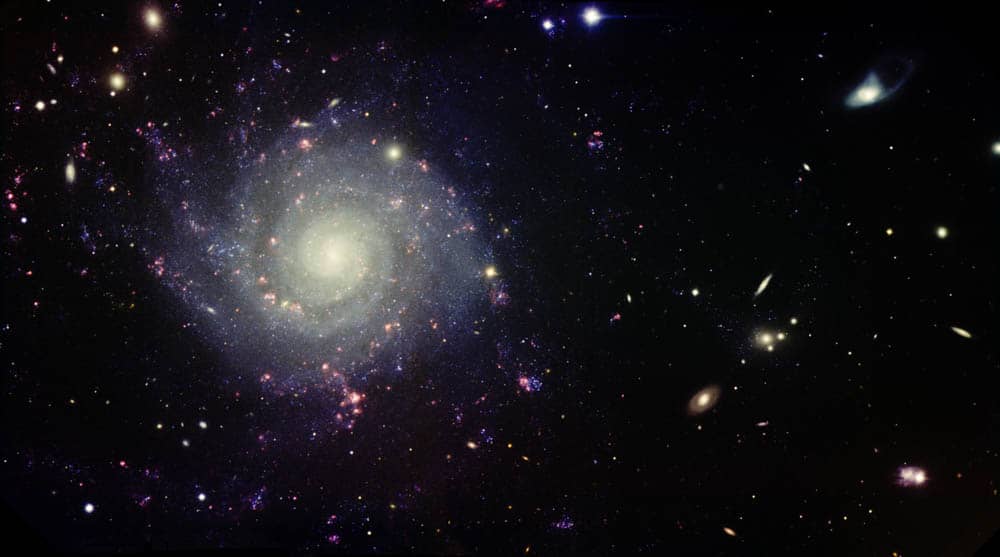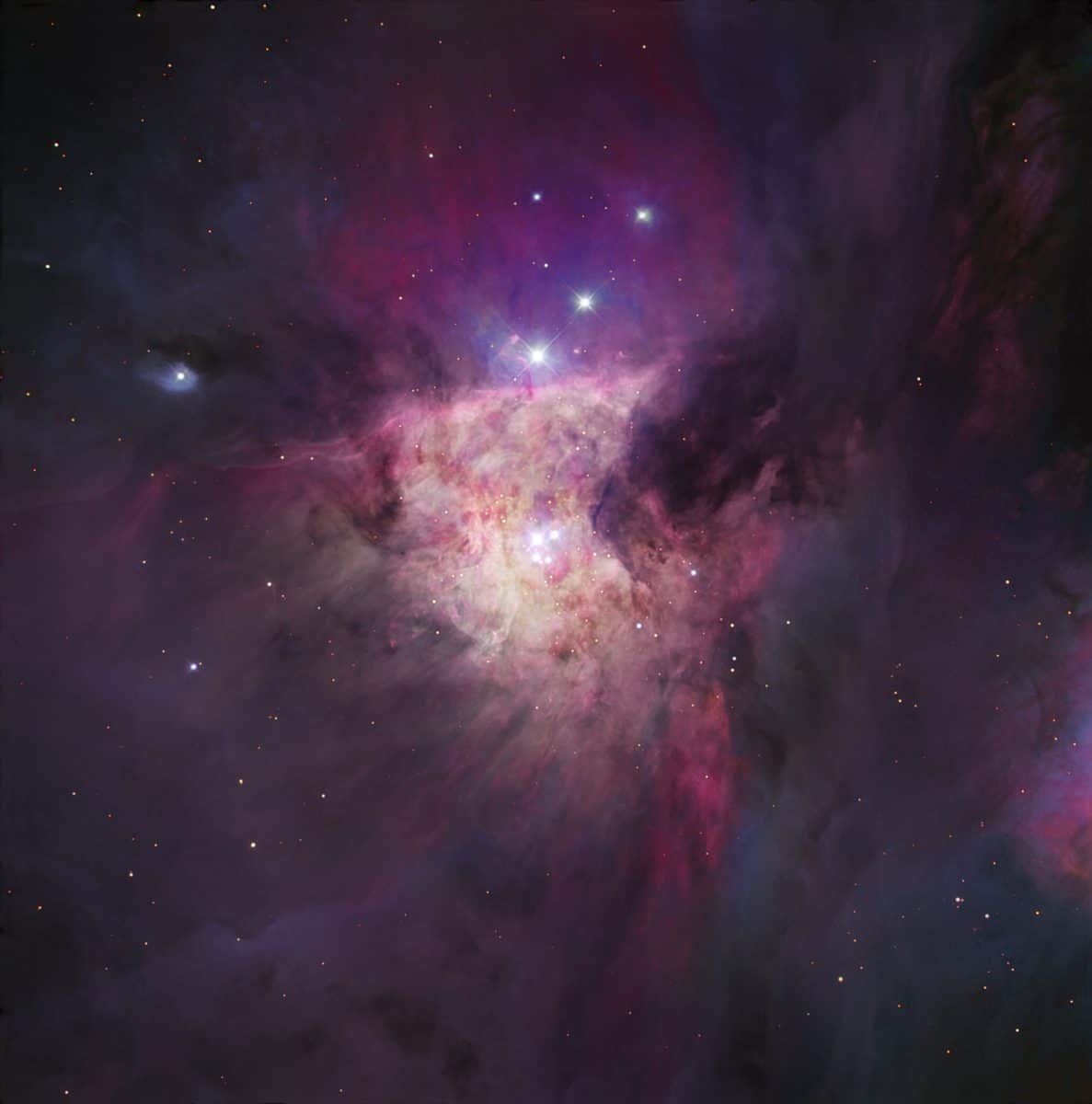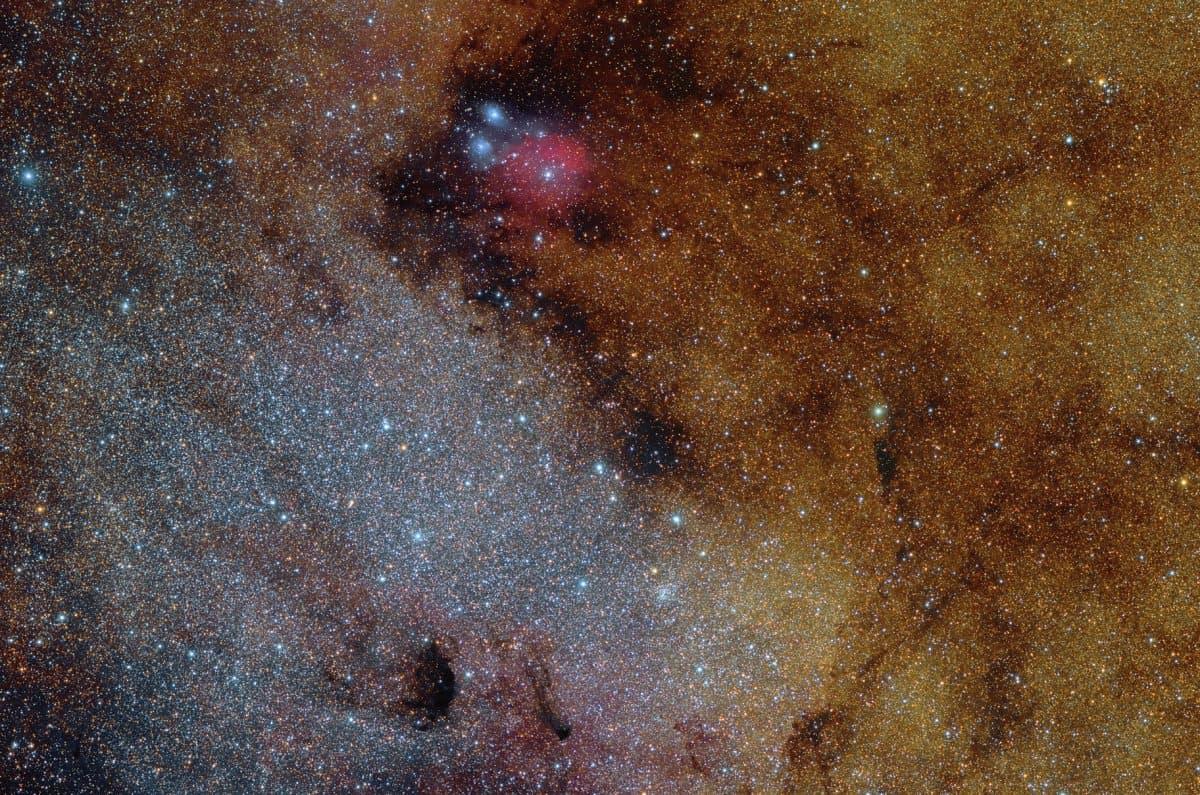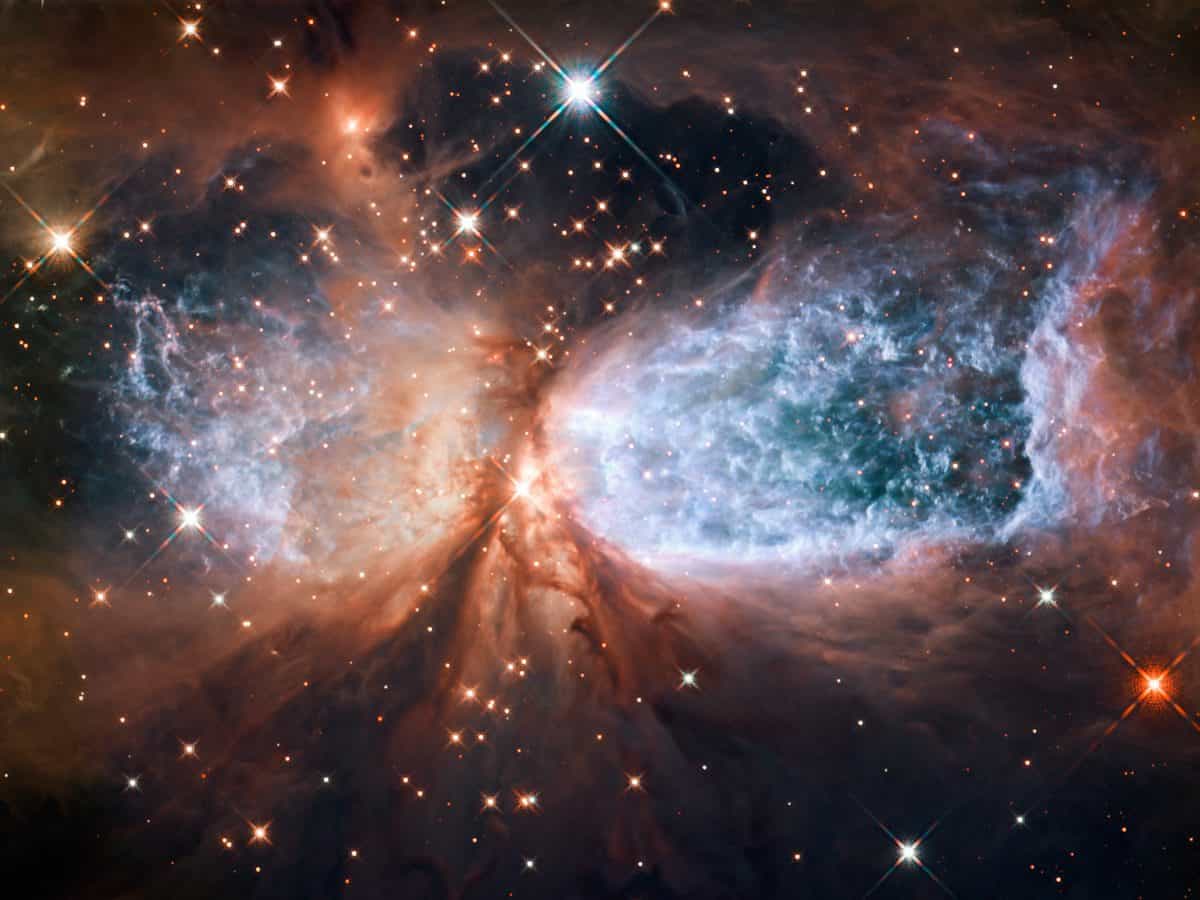Blog
The winner of the student division of Australia’s 2013 Gemini Astronomy Contest was Isobelle Teljega, who was in Year 8 at St. Margaret’s Anglican Girls School in the Brisbane suburb of Ascot, Queensland, Australia. Her entry was submitted for her by Chris Farrelly, who is the Head of Faculty – Science. The school’s Astronomy Club, which Mr. Farrelly supervises, had been a contest runner-up each of the previous two years.
Isobelle’s contest entry had suggested that Gemini South obtain an image of the galaxy IC 5332, which is a large face-on spiral galaxy within the constellation Sculptor. In addition, the image contains a cluster of galaxies in the distant background.
IC 5332, also known as PGC 71775 is a spiral galaxy about 39 million light-years away in the constellation Sculptor. IC 5332 is a delicate spiral galaxy that is unusually faint and beautifully symmetrical. As viewed from earth it is nearly face on. It has a very small central bulge and open spiral arms accounting for its classification (Sc). The galaxy lies in the direction of the celestial south pole.
IC 5332 is a late type spiral galaxy with observable star formation ongoing, though at such a low rate as to be a stable non-starburst galaxy. It is a somewhat tenuous spiral galaxy with a very low surface brightness of just 23.8 mag/squ arc sec.
more...Leon “Ndugu” Chancler (/ɪnˈduːɡuː
Born in Shreveport, Louisiana, on July 1 1952, Leon Ndugu Chancler was the last child of seven children from the union of Rosie Lee and Henry Nathaniel Chancler. In 1960 the family relocated to Los Angeles, California. Chancler began playing drums when he was thirteen years old. He would publicly reminisce about being asked to leave a classroom for continuously tapping on the desk, only to be later heard tapping on the poles in the hallway. His love for the drums took over while attending Gompers Junior High School and it became his lifelong ambition. He graduated from Locke High School having been heavily involved in playing there with Willie Bobo and the Harold Johnson Sextet. He graduated from California State University, Dominguez Hills with a degree in music education. By then he had already performed with the Gerald Wilson Big Band, Herbie Hancock, and recorded with Miles Davis, Freddie Hubbard, and Bobby Hutcherson.
He recorded as a sideman in jazz, blues, and pop music, including the iconic and instantly recognizable drums on “Billie Jean” by Michael Jackson.
more...
James Henry Cotton (July 1, 1935 – March 16, 2017) was an American blues harmonica player, singer and songwriter, who performed and recorded with many of the great blues artists of his time and with his own band. He played drums early in his career but is famous for his harmonica playing.
Cotton began his professional career playing the blues harp in Howlin’ Wolf‘s band in the early 1950s. He made his first recordings in Memphis for Sun Records, under the direction of Sam Phillips. In 1955, he was recruited by Muddy Waters to come to Chicago and join his band. Cotton became Waters’s bandleader and stayed with the group until 1965. In 1965 he formed the Jimmy Cotton Blues Quartet, with Otis Spann on piano, to record between gigs with the Muddy Waters band. He eventually left to form his own full-time touring group. His first full album, on Verve Records, was produced by the guitarist Mike Bloomfield and the singer and songwriter Nick Gravenites, who later were members of the band Electric Flag.
Cotton was born in Tunica, Mississippi. He became interested in music when he first heard Sonny Boy Williamson II on the radio. He left home with his uncle and moved to West Helena, Arkansas, finding Williamson there. For many years Cotton claimed that he told Williamson that he was an orphan and that Williamson took him in and raised him, a story he admitted in recent years is not true. However, Williamson did mentor Cotton during his early years.
more...William James Dixon (July 1, 1915 – January 29, 1992) was an American blues musician, vocalist, songwriter, arranger and record producer. He was proficient in playing both the upright bass and the guitar, and sang with a distinctive voice, but he is perhaps best known as one of the most prolific songwriters of his time. Next to Muddy Waters, Dixon is recognized as the most influential person in shaping the post–World War II sound of the Chicago blues.
Dixon’s songs have been recorded by countless musicians in many genres as well as by various ensembles in which he participated. A short list of his most famous compositions includes “Hoochie Coochie Man“, “I Just Want to Make Love to You“, “Little Red Rooster“, “My Babe“, “Spoonful“, and “You Can’t Judge a Book by the Cover“. These songs were written during the peak years of Chess Records, from 1950 to 1965, and were performed by Muddy Waters, Howlin’ Wolf, Little Walter, and Bo Diddley; they influenced a generation of musicians worldwide.
Dixon was born in Vicksburg, Mississippi, on July 1, 1915. His mother, Daisy, often rhymed things she said, a habit her son imitated. At the age of seven, young Dixon became an admirer of a band that featured pianist Little Brother Montgomery. He sang his first song at Springfield Baptist Church at the age of four.
more...The Orion Nebula is arguably the finest of all nebulae within the Milky Way visible from the Northern Hemisphere. With a gaseous repository of 10,000 suns, and illuminated by a cluster of hot young stars, the clouds of Messier 42 — as it is also known — glow with fantastic colours and shapes, giving us a bird’s eye view of one of the greatest star forming nurseries in our part of the Milky Way. Messier 42 is a complex of glowing gas, mostly hydrogen but also helium, carbon, nitrogen, and oxygen in decreasing amounts, located 1,500 light-years away. At its very heart, we find the Trapezium, a group of four very hot stars that illuminate the nebula. They are the brightest of an extended cluster of several thousand young stars many of which lie unseen within the opaque gas and dust. Amazingly, whilst the Orion Nebula is easy to identify with the unaided eye, there is apparently no written record of its existence before the 17th century.
This image is based on data acquired with the 1.5 m Danish telescope at the ESO La Silla Observatory in Chile, through three filters (B: 60 s, V: 30 s, R: 21 s). East is at the upper right corner and North is at the lower right.
more...Stanley Clarke (born June 30, 1951) is an American bassist and founding member of Return to Forever, one of the first jazz fusion bands. He has composed music for films and television and has worked with musicians in many genres. Like Jaco Pastorius, Clarke gave the bass guitar a prominence it lacked.
Clarke was born in Philadelphia. His mother sang opera around the house, belonged to a church choir, and encouraged him to study music. He started on accordion, then tried violin. He was introduced to the bass as a schoolboy when he arrived late on the day instruments were distributed to students, and acoustic bass was one of the few remaining selections. He took lessons on double bass at the Settlement Music School in Philadelphia, beginning with five years of classical music. He picked up bass guitar in his teens so that he could perform at parties and imitate the rock and pop bands that girls liked. He cites as influences Ron Carter and Charles Mingus.
more...Andrew Hill (June 30, 1931 – April 20, 2007) was an American jazz pianist and composer.
Jazz critic John Fordham described Hill as a “uniquely gifted composer, pianist and educator” although “his status remained largely inside knowledge in the jazz world for most of his career.”His most-lauded work was recorded for Blue Note Records, spanning nearly a decade and a dozen albums that featured his cerebral interpretation of post-bop, often described as avant garde but uniquely Hill’s own style that shared little in common with free jazz of the 1960s.
Andrew Hill was born in Chicago, Illinois (not in Port-au-Prince, Haiti, nor was he born in 1937, as was reported by many earlier jazz reference books), to William and Hattie Hille. He had a brother, Robert, who was a singer and classical violin player. Hill took up the piano at the age of thirteen, and was encouraged by Earl Hines. As a child, he attended the University of Chicago Experimental School. He was referred by jazz composer Bill Russoto Paul Hindemith, with whom he studied informally until 1952.
more...Nicolas Kasanda wa Mikalay (7 July 1939 – 22 September 1985), popularly known as Docteur Nico, was a guitarist, composer and one of the pioneers of soukous music. He was born in Mikalayi in the Belgian Congo. He graduated in 1957 as a technical teacher, but inspired by his musical family, he took up the guitar and in time became a virtuoso soloist.
more...Unlike most entries in Charles Messier’s famous catalog of deep sky objects, M24 is not a bright galaxy, star cluster, or nebula. It’s a gap in nearby, obscuring interstellar dust clouds that allows a view of the distant stars in the Sagittarius spiral arm of our Milky Way galaxy. When you gaze at the star cloud with binoculars or small telescope you are looking through a window over 300 light-years wide at stars some 10,000 light-years or more from Earth. Sometimes called the Small Sagittarius Star Cloud, M24’s luminous stars fill the left side of this gorgeous starscape. Covering about 4 degrees or the width of 8 full moons in the constellation Sagittarius, the telescopic field of view contains many small, dense clouds of dust and nebulae toward the center of the Milky Way, including reddish emission from IC 1284 near the top of the frame.
more...Gilberto Passos Gil Moreira (born 26 June 1942), known professionally as Gilberto Gil (Brazilian Portuguese: [ʒiɫˈbɛxtu ʒiɫ] or [ʒiu̯ˈbɛɾtʊ ʒiu̯]), is a Brazilian singer, guitarist, and songwriter, known for both his musical innovation and political activism. From 2003 to 2008, he served as Brazil’s Minister of Culture in the administration of President Luiz Inácio Lula da Silva. Gil’s musical style incorporates an eclectic range of influences, including rock, Brazilian genres including samba, African music, and reggae.
Gil started to play music as a child and was a teenager when he joined his first band. He began his career as a bossa nova musician and grew to write songs that reflected a focus on political awareness and social activism. He was a key figure in the Música popular brasileira and tropicáliamovements of the 1960s, alongside artists such as longtime collaborator Caetano Veloso. The Brazilian military regime that took power in 1964 saw both Gil and Veloso as a threat, and the two were held for nine months in 1969 before they were told to leave the country. Gil moved to London, but returned to Bahia in 1972 and continued his musical career, as well as working as a politician and environmental advocate
more...Julian Priester (born June 29, 1935 in Chicago) is an American jazz trombone player and composer. He is sometimes credited as Julian Priester Pepo Mtoto.
He has played with many artists including Sun Ra, Max Roach, Duke Ellington, John Coltrane and Herbie Hancock.
Priester attended Chicago’s DuSable High School, where he studied under Walter Dyett. In his teens he played with blues and R&B artists such as Muddy Waters, and Bo Diddley, and had the opportunity to jam with jazz players like saxophonist Sonny Stitt.
more...World Music on Flamenco Fridays with Paco de Lucia
Performing Bulerias
https://www.youtube.com/watch?v=0UxHi3SIrPg
more...Sh2-106 is an emission nebula and a star formation region in the constellation Cygnus. It is a H II region estimated to be around 2,000 ly (600 pc) from Earth, in an isolated area of the Milky Way
In the center of the nebula is a young and massive star that emits jets of hot gas from its poles, forming the bipolar structure. Dust surrounding the star is also ionized by the star. The nebula spans about 2 light-years across.
The central star, a source of infrared radiation usually referred to as S106 IR or S106 IRS 4, is believed to have been formed only 100,000 years ago. It is a massive star, approximately 15 solar masses. Two jets of matter streaming from its poles heat surrounding matter to a temperature of around 10,000 °C.Dust that is not ionized by the star’s jets reflect light from the star. With an estimated surface temperature of 37,000°K, it is classified as a type O8 star. It loses around 10−6 per year in solar winds, ejecting material at around 100 km/s
more...Anthony John Medeski (born June 28, 1965) is an American jazz keyboards player and composer. Medeski is a veteran of New York’s 1990s avant-garde jazz scene and is known popularly as a member of Medeski Martin & Wood. He plays the acoustic piano and an eclectic array of keyboards, including the Hammond B3 organ, melodica, mellotron, clavinet, ARP String Ensemble, Wurlitzer electric piano, Moog Voyager Synthesizer, Wurlitzer 7300 Combo Organ, Vox Continental Baroque organ, and Yamaha CS-1 Synthesizer (a “kids’ toy”), among others. When playing acoustic piano, Medeski usually plays the Steinway piano and is listed as a Steinway Artist.
Medeski was born in Louisville, Kentucky, and grew up in Florida. After studying piano as a child (starting when he was five years old), he began as a teenager to perform with musicians such as Mark Murphy and Jaco Pastorius. He attended Pine Crest School. In 1983, after graduating from high school, he began studying piano at the New England Conservatory in Boston, where he performed as a sideman with Dewey Redman, Billy Higgins, Bob Mintzer, Alan Dawson. Medeski attributes his early interest in playing improvised music and jazz to listening to Oscar Peterson.
more...David “Honeyboy” Edwards (June 28, 1915 – August 29, 2011) was a Delta blues guitarist and singer from Mississippi.
Edwards was born in Shaw, Mississippi. At the age of 14, he left home to travel with the bluesman Big Joe Williams, beginning life as an itinerant musician, which he maintained through the 1930s and 1940s. He performed with the famed blues musician Robert Johnson, with whom he developed a close friendship. Edwards was present on the night Johnson drank the poisoned whiskey that killed him, and his story has become the definitive version of Johnson’s demise. Edwards also knew and played with other leading bluesmen in the Mississippi Delta, including Charley Patton, Tommy Johnson, and Johnny Shines.
more...The band was formed in 2014, it is composed of experienced musicians from Łódź, who deal with various genres on a daily basis: from improvised music, through alternative rock scene to traditional Polish music. The common denominator for the band members was music from the Opoczno region. Trying to preserve the most raw and original sound, and at the same time to reach their own musical roots, the group wants to combine contemporary improvisation with the spontaneity of village music.
more...More Posts
- Tuck Andress
- Flamenco Fridays con El Pele y Niño Seve
- Daily Roots Riley All Stars
- Cosmos IC 1623 JWST
- Phillip Catherine
- Babs Gonzales
- World Music Mdou Moctar
- Daily Roots The Aggrovators
- Zamya Theater Challenge to Change 10-26-22
- The Cosmos IC 5146
- Maggie Roche
- Bootsy Collins
- Milton Nascimento
- Eddie Henderson
- Charlie Barnett
- Bassam Saba
- World Music Olivia Foai
- Daily Roots Phillip Frazer
- Cosmos NGC 1999
- Earl Palmer




